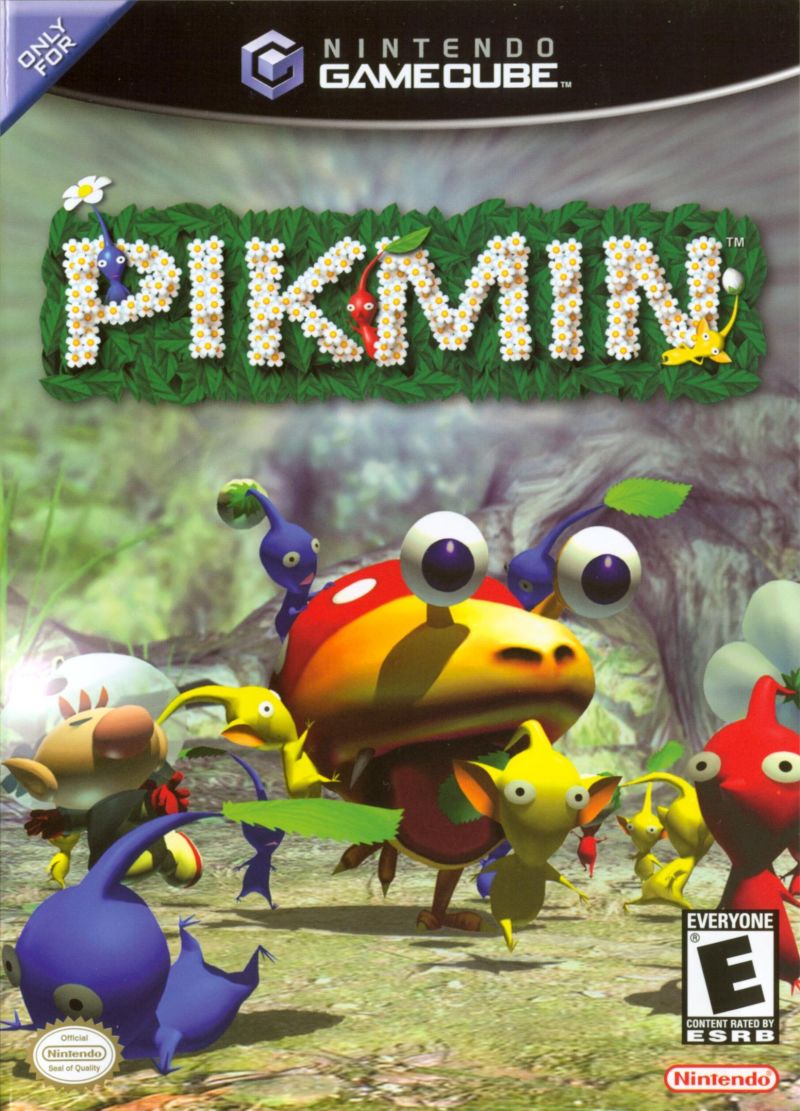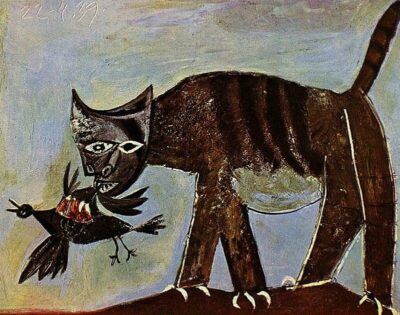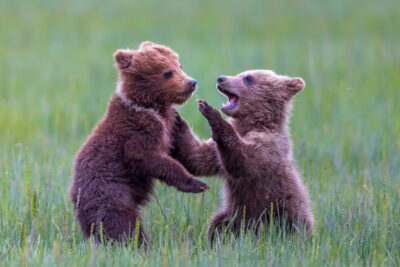| Creator | Nintendo team composed of various members |
| Media Form | Video Game for the Nintendo GameCube |
| Genre | Real-Time Action & Strategy |
| Technique | Developed using Microsoft Windows |
| Release Date | October 26th, 2001 in Japan |
| “Predator” Represented | Various Fictional Predators Found in the Pikmin Series |
A body the size of a quarter emerges from a crashed ship, a skeleton of its former self, forced to venture out into this alien planet that was just meant to be a sight on the journey back home. This sole individual explores this environment, without any idea on how they’ll find the ship’s missing parts and return home, all while a limited 30 days worth of oxygen supply looms overhead. Hope seems lost, until a strange red device pops out of the ground, sputtering to life as it spits out a sole red seed. Devoid of other things to do, the player’s avatar, Captain Olimar, plucks out the stem poking out the ground. Now a creature even smaller than Olimar, stands at attention, ready to be commanded. This is a Pikmin, the titular tiny soldiers players command while exploring this lush planet in the series Pikmin.
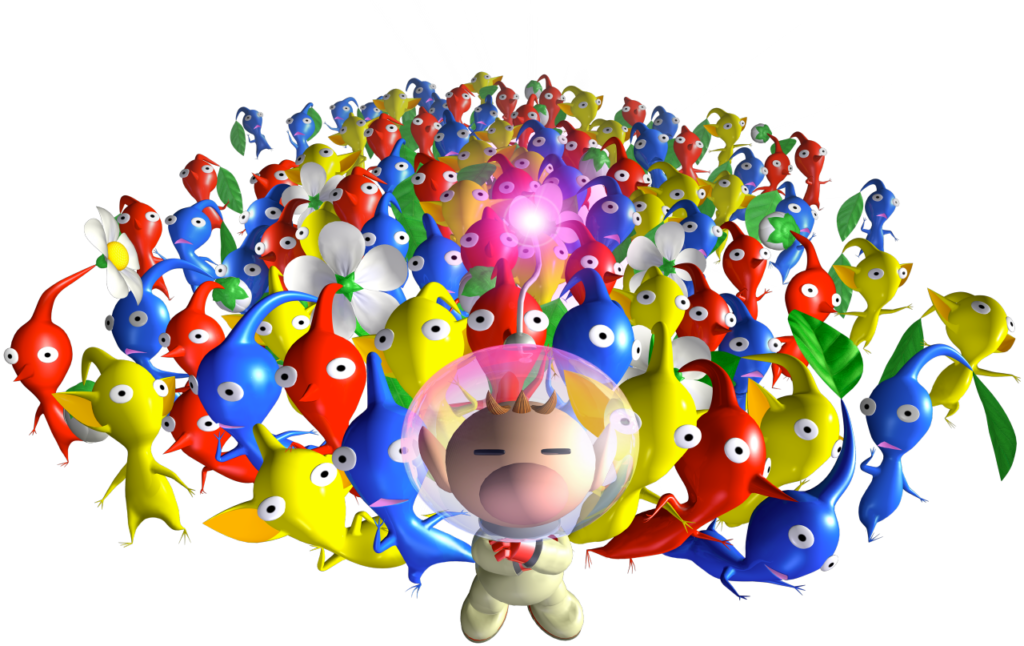
Pikmin throughout the series are seen with various colors, shapes, and capabilities, culminating in a cute brigade of ant-like drones who follow their alien captain’s whistle, ready to lay down their life in service from the moment they’re plucked. From red to blue, bulky to poisonous, durable to flying, icy to ghostly, Pikmin have unique anatomy and biology that make them a fascinating species to watch as they carry items around at the player’s behest. However, ecologically, Pikmin all share one thing in common, they’re hunted by nearly every other lifeform on this planet. Predation of Pikmin is of course a result of game design, utilizing this fictional rendition of what’s revealed to be a post-human Earth, renamed to PNF-404, to present sometimes familiar, but mainly bizarre, animals that act as unique obstacles for players to overcome. One of the game’s directors, amidst a multipart interview to promote the newest entry in the series, even admit how “creating a real-life ecosystem wasn’t our primary plan,” but how the creative team still wanted to portray a somber, but still cute, cast of animals that seem like they could possibly exist. However, even with their supposed lack of precision when creating PNF-404’s fauna and flora, the team was still able to craft a complex ecosystem in each entry, where further discoveries are shared about these predators a player is constantly struggling against.

The simplest, and the most famous, predator in the entire Pikmin franchise, is that of the “Bulborb” species, mirroring Pikmin by having various subspecies. These Bulborbs represent the oddity that is Pikmin’s design philosophy, as it’s a giant grub-like creature, standing on two scrawny legs, with giant eyes supported by stalks on the top of their body, and with a massive mouth perfect for gobbling up handfuls of Pikmin. Despite this odd anatomy, Bulborbs are one of the easiest predators in the series to understand, as even by the second game players are able to comprehend the entire lifecycle of Bulborbs. Pikmin 2 reveals the enemy class titled the “Empress Bulblax,” who look similar to termite queens or other insect matriarchs, with this specific enemy just constantly birthing Bulborb larvae. These Bulborbs soon grow up, gaining their iconic red coloration with white spots, with those that survive becoming another generation of apex predators. However, players typically don’t see this supposed superiority, as Bulborbs are nocturnal, and wise players will only stumble across sleeping Bulborbs, likely before ambushing the sleeping threat before it gets a chance to react.
However, Pikmin still uses environmental storytelling and an in-game encyclopedia, called the “Piklopedia,” as a means to facilitate this idea that Bulborbs are in fact, not just slumbering push-overs. As Olimar passes a sleeping Bulborb, smaller Bulborbs will likely give chase, which most would presume are juveniles that are just more active than adults. This isn’t the case. Instead, these annoyances are members of a completely different species of animal, who simply mimic the Bulborb’s appearance to avoid predation and scavenge what the actual member of the “Grub-dog” family may leave behind. Such tactics are deployed for nearly every Bulborb subspecies; this widespread approach being so lucrative is evidence that Bulborbs are typically the number one predator on PNF-404.
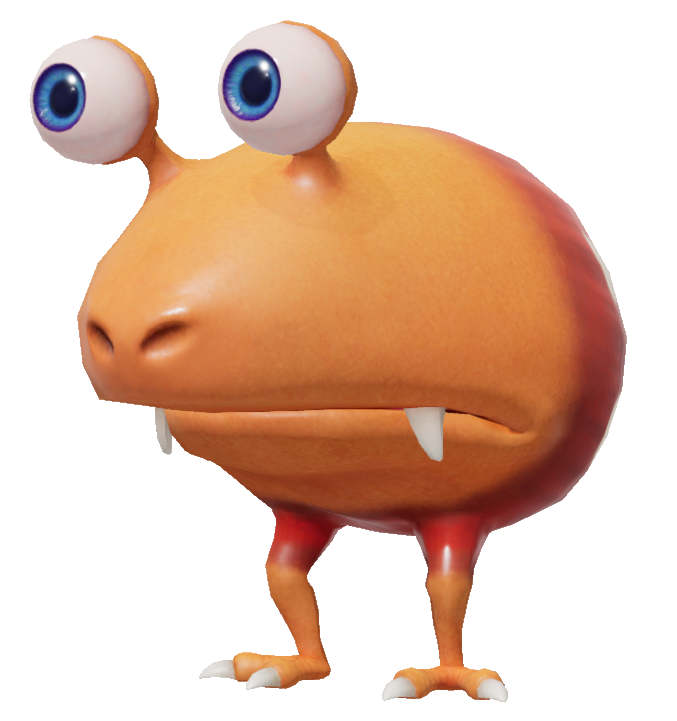
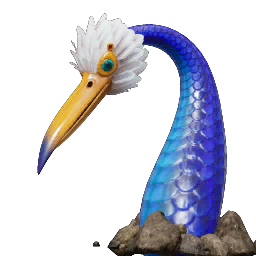
Various other predators are presented to players during their exploits on PNF-404, some more comprehensible than the Bulborb, but typically are still a bastardization of predators that currently roam Earth. The “Burrowing Snagret” for instance, is a chimera of a snake and bird. Popping its avian head from below ground, the Snagret’s scaled neck/torso will twist and turn, snatching up prey in its beak before returning underground. When defeated, it’s revealed that the Snagret also has another avian feature, a single bird foot which certain species will hop around on. Another enemy fusing varying modern animal attributes is that of the Blowhog family. The name clearly alludes to a swine inspiration with their body shape, yet all its members also have a pronounced trunk, presenting another strange blurring of two familiar images of our planet, one that has evidently went through some extreme change for such strange anatomical wonders to wander.
Besides combining features of two separate animals, Pikmin predators may also employ a mixture of a typical animal with some elemental property which they utilize when hunting. Blowhogs, as previously referenced, are the most bountiful both in numbers, and what elements they draw their powers from. The “Fiery Blowhog,” as the name implies, can manipulate flames to char any who attack, along with likely being its method of hunting prey, though this claim isn’t made in Olimar’s Piklopedia entries. However, the closely related “Puffy Blowhog” does provide a clear example of elemental abilities used for hunting. In Pikmin 2, Olimar notes how this floating species of Blowhog “blows leaves and grass around to eat the insects underneath.” While this trait isn’t exemplified in combat against Pikmin groups, it’s interesting to still note that species do have specific mechanics designed for hunting creatures other than Pikmin, though it is disappointing this idle hunting isn’t ever shown to the player, only described.
Pikmin doesn’t rely on purely a naturalistic direction when crafting its host of predators, using machinery left behind by the now lost human civilization as a place to pull from when designing enemies. The “Gatling Groink” for instance, is a fish-like creature that’s evolved with machinery to create a living artillery machine. With a fin that acts as a counterbalance and an ammunition cylinder. Olimar is even impressed and scared of this monstrous power, noting both that the Gatling Groink is “one of the most fearsome creatures in the ecosystem” and is “one of the most advanced evolutionary specimens ever observed.” This beast is unique to Pikmin 2, a game notable for really emphasizing on this blurred boundary between nature and machinery, with some bosses that similarly utilize modern appliances or weapons for their attacks.
However, something consistent in the entire Pikmin series is a smudged differences between plants and animals. Predators such as the “Creeping Chrysanthemum” likely would be called mimics by players, assuming their eye stalks just look like flowers to allow them to better hide and wait for prey. However, Olimar actually explains how this creature is a plant, one that has given up photosynthesis, gaining a sense of sentience and autonomy that allow it to directly hunt upon smaller creatures. One doesn’t even need to look at this large-bellied flora to recognize this oddity of plants who act like animals, since they’ve relied on such a strange phenomenon the entire game, being the Pikmin. Pikmin are planted, they have stems which is what Olimar uses to throw them, and love drinking nectar rather than feasting on the corpses of defeated enemies. Yet this ill-defined certainty of Pikmin doesn’t just end at their anatomy, but their overall power in their ecosystem.
When players explore PNF-404, it’s made evident that the whole world seems to be against them and their newfound pals. Some, including myself, find this dynamic a little boring when one looks past the experience of the player. At first glance, it implies that Pikmin, and thus the player, are the sole focus of the environment, that Pikmin are prey and that everything is out to get them, at best an enemy would just be neutral or pathetic enough to not be an inherent threat. This perspective can make it seem like the game world revolves solely around the player, a complaint that is levied on many games of different genres or generations. However a more fascinating viewpoint can also be inferred from all the strange unique cases where species on PNF-404 seem to have specifically means of defending themselves against Pikmin. Seemingly, Pikmin are in fact a force that could explode if most of the fauna on this planet didn’t adapt specifically against them, making them a predator that could even outperform the Bulborb with minimal resistance.
Before fully diving in, it should be made clear that Pikmin are predatory to some extent. While they don’t need to eat, in fact most subspecies lack a mouth to do so, they do need the dead (or sometimes alive) bodies of enemies to populate. It’s a complex topic and a little hard to fully establish it, but the device that enables this is what Olimar first encountered when crashing in Pikmin 1, an object called an “Onion.” Simply, Onions are incubators and nests for Pikmin, able to produce and harbor an infinite number of offspring(though this capability is just for gameplay simplicity), but requires “fuel” to create Pikmin seeds. There are rarely mentions of how Pikmin achieve this, but there is still an example to showcase their natural predation. “Wolpoles,” just tadpoles with a different name, are one of the very few species noted explicitly to be hunted by Pikmin, though only by the blue variant that can survive in water. There might be other sources that elaborate on what Pikmin hunt without the guidance of a captain, and many possible hypotheses can be formulated, but it’s great to have some confirmed evidence that Pikmin can hunt without Olimar, though likely less efficiently, gaining likely only slightly more Pikmin than they lose.
So the question is, with so little confirmed cases of Pikmin predation, how can one infer that they were at some point dominant enough to cause species to evolve? The answer to this is found by looking towards Piklopedia entries and behavior of other animals present on PNF-404. The “Swooping Snitchbug” is a prime example, being a “predator” that frankly is more of just an annoyance. These flying insects have fingers of which they use to grab ahold of loose Pikmin, before plunging them into the ground, where they need to be plucked by Olimar. Olimar notes this strange method in the Piklopedia, noting this behavior has an unknown cause, as these annoying foes don’t show an interest in eating Pikmin. A similar phenomena can be witnessed with another insect enemy, the repulsive hunched “Antenna Beetle.” These animals produce a noise similar to Olimar’s whistle, which is how he does things like recall Pikmin. One might assume these beetles use this ability to use Pikmin in a similar offensive practice like Olimar, but this assumption is wrong. Instead, Pikmin simply run away or become passive when exposed to the tune, meaning this enemy developed this frequency just as a defensive option, to avoid being overwhelmed and killed by Pikmin legions.
Strange ecological interactions such as these imply an evolutionary arms race between these (relatively) massive animals against the likes of the Pikmin. The Snitchbug for instance can fly, an ability that is only mirrored by a couple of the known Pikmin subspecies, so their behavioral adaptation to plant these Pikmin back into a non-threatening state implies they’re still a notable problem many creatures have to keep in mind. “Wollyhops,” the adult form of the Wolpoles, also showcase a less specialized, but still strange attitude towards Pikmin. Lacking an actual mouth, it’s clear Wollyhops can’t hunt Pikmin for food (and it’s left unclear how they eat at all), and instead have a quirk where they will crush smaller creatures that come near it. I propose the behavior of species like the Snitchbug and Wollyhops are strong enough proof that Pikmin can quickly snowball into such a threat that the fauna on PNF-404 had to specifically evolve to snuff out Pikmin, either by using them as a food source, killing them in hordes, or by developing special interactions that can render these miniature terrors inert.
Before Olimar crashes on PNF-404, it feels fair to assume that this balance had been achieved, with Pikmin only surviving in small collections due to how quickly they can be made by the Onion, but not being skilled or numerous enough to get enough prey to let the Onion create an army. Pikmin also likely had a slower or perhaps radically different method of emerging from the ground without a hand that plucks them when they’re first produced. However, by the time Olimar collects the final part of his ship and leaves, players can see the effect their leadership had on this species. In the final cutscene, as the smoke dissipates after Olimar sets off to return to his home planet of Hocotate, a group of Pikmin become the focus. Collecting themselves with their blank expressions, they soon begin charging at a nearby Bulborb rather than return to their Onion to hide in for the night. Using the tactics taught by their captain, the Pikmin throw themselves on the Bulborb’s back, presumably defeating the creature with much fewer casualties than they’d accrue if they just relied on their instincts. They’re shown to now have the capabilities to outsmart their main foe, avoiding the vicious maw that’s gobbled so many Pikmin in the past. After all the hardships a player went through, seeing their loyal followers eaten, reduced to ash, drowned in (rather shallow) water, crushed, and various other fates in an environment that’s constantly beating down on these plant critters, a transformation from prey to predator is facilitated in this final scene of the first game.
Pikmin is an experience in the strange yet natural, where the environment feels so familiar but is occupied by bizarre shapes that are unlike almost anything we could imagine. Pikmin themselves represent this strange lack of biological rigidity in this world, where plants behave like animals, where animals merge with machines, where machines can seemingly become organic, and where prey can easily become predator. There’s many other aspects of zoology and ecology to explore in this new representation of Earth that don’t even include the idea of predation. “Breadbugs” for instance, seem to compete in the same ecological niche as Pikmin, and forms of unique parasitism that encapsulates both Pikmin and other animals are hidden in the game’s depths. But those are discussions for another day, and this discussion must draw to a close, much like how Olimar’s daily toil to explore the various regions in Pikmin has to end before nightfall. Yet the captain doesn’t seem to realize that as he flies above the planet to avoid the bustling nocturnal predators, he brings with him what can easily become the dominant species of this alien planet.
